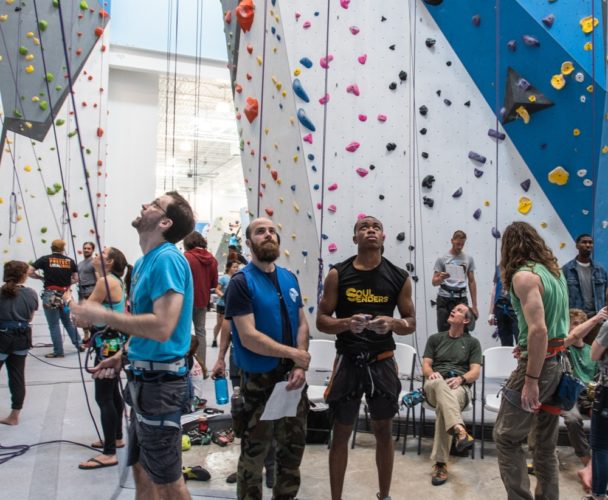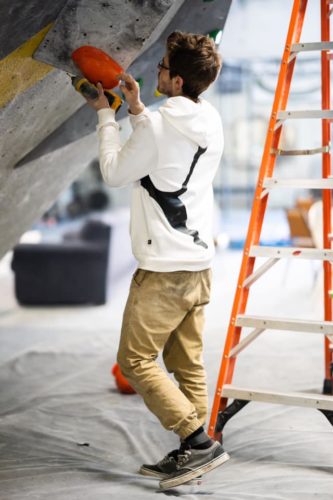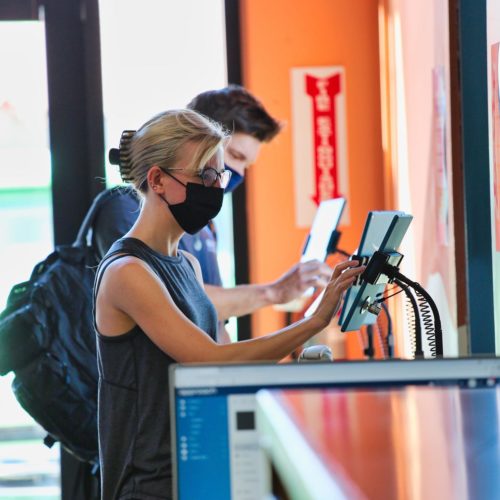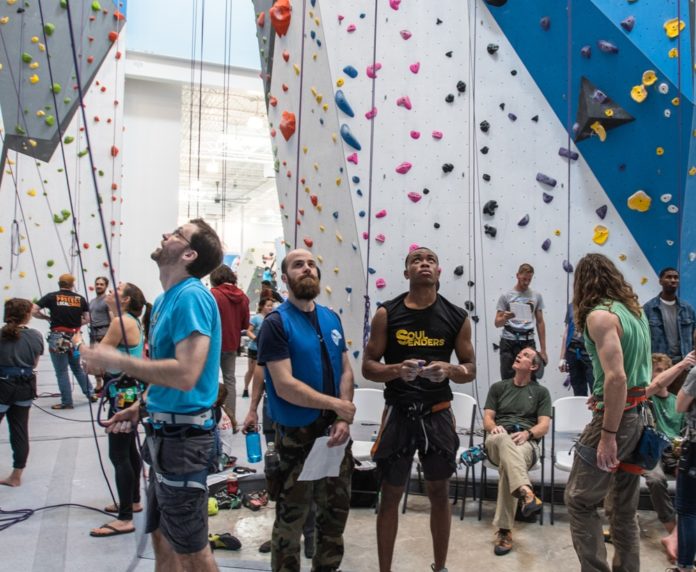
In our last article, “What’s An Employee?”, we discussed different worker types (employees, independent contractors, volunteers) and how your insurance policies might react to them. That previous article helps with questions like “what coverage might I have if a volunteer gets injured?” or “what coverage might I have if a volunteer causes a participant injury?” We spent most of our time focusing on employees and independent contractors but, knowing how many gyms regularly utilize volunteers, we’re going to take the time now to dive a little deeper into that category.
Let’s first take a look at what you want in a volunteer:
Are they qualified for the job you are giving them?
If you are bringing in a volunteer to belay in a climbing competition, gauging their competency and experience is important. Of course, at minimum, you should ensure the belayer gets belay certified at your gym for the type of climbing they are belaying―top rope or lead. Ideally, they will have a bit more experience in belaying than just that class, and also have a bit more experience using the types of belay devices that your gym allows.
If you are using a volunteer to help with the routesetting process, gauging competency is crucial. Are they performing work requiring specialized tools and at-height exposure? If they are only helping routeset in a bouldering area, exposure isn’t quite as big since usually just ladders are used. Still, the volunteer should remain under the constant supervision of your employed routesetting team. This becomes infinitely truer if the volunteer is getting into any at-height work. Routesetting at height is much riskier, and it requires skill and knowledge of the appropriate tools and how to use them. If the volunteer routesetter does not yet have those skills and expertise, but you are willing to help develop them, then make sure you are providing adequate training―just as you would an employee―and ensure they are remaining under your team’s supervision. Having them start with responsibilities on the ground or with forerunning, and slowly working their way up as their familiarity and competency grows, is a preferred method.
Even if the volunteer will be keeping their feet on the ground and their hands off a rope, make sure you are providing them with adequate training for their role and establishing expectations.
Should you have an age limit for the role they are playing?
There’s no “hard rule” for this. Different insurance carriers will have different perspectives, so we suggest you reach out to your insurance agent for guidance. But we suggest that if you are using any volunteers under the age of, let’s say 13, then the volunteer’s parent should remain on site. We also highly suggest that you don’t utilize volunteers under the age of 18 to perform any at-height or critical roles (such as belaying, routesetting, or even forerunning); their feet should remain on the ground while in a volunteer role. If a minor is injured in an accident and a claim comes out of it, the claim’s financial impact will be amplified.
Is the volunteer trustworthy and with a clean criminal record?
Ensuring a volunteer is trustworthy is an important effort, especially if they are working in a critical role, working with children, or entrusted with money. Background checks are suggested. If you have a sexual abuse and molestation policy (which we recommend most gyms have), then some carriers require volunteer background checks in order for coverage to trigger in the event of a claim. Define your own business’ “measuring stick” for what is or isn’t acceptable to find in a criminal record; for example, not having someone with a history of abuse working around kids, or not having someone with a history of theft working around cash. Decide if the volunteer applicant can be trusted with the volunteer role you have in mind, and never leave any volunteer (or any employee, for that matter) in a one-on-one situation with a minor.

Next, let’s discuss the paperwork involved:
Volunteer Applications
Each volunteer should fill out a volunteer application. The more safeguards you have in place to show that you have properly vetted a volunteer, the better your business will be protected in the case of a volunteer causing harm and a lawsuit occurring. We recommend basic questions on the application, including but not limited to: volunteer contact info, emergency contact info, physical limitations, any medical certifications, a copy of their driver’s license, references, statement on any criminal offenses or convictions, other volunteer or work experience, and any pertinent training/skills/expertise. The volunteer should also sign and date their application.
Volunteer Policies & Procedures
Setting expectations is key! What is within the volunteer’s realm of responsibility? Almost more importantly, what is outside their realm of responsibility? What behavior is expected of the volunteer and what is prohibited? What are the guidelines they should be operating by? Create structure and provide rules. If the volunteer steps outside of those guidelines and causes trouble, having these policies and procedures in place and showing where the volunteer signed that they understood them can go far to protect you from liability.
Volunteers & Waivers
Having a separate liability waiver drawn up around common volunteer risks is a good idea. Your volunteer may be exposed to risks that are separate and distinct from the ones defined in your gym’s regular participant waiver. For example, a volunteer routesetter might get metal shavings in their eye while using an impact driver, which is not a typical risk you’d see defined in your gym’s participant waiver. Once you have this volunteer waiver drawn up by your attorney, have each volunteer read and sign the waiver before beginning their roles. Whether they are working at height or hanging out on the floor of your gym, they are exposed to risks and need to acknowledge and accept those risks in order to volunteer for you. This will further protect your business in the case of an accident and lawsuit occurring. If you want to review options to potentially cover a volunteer for their injury, go check out our previous article. However, regardless of your options to cover a volunteer’s injury, you should have them sign your waiver; there is always a chance that even if you offer to cover a volunteer’s medical costs, they could sue you for negligence. If that happens and you don’t have a signed waiver on file, your General Liability coverage may not trigger for you.

Finally, we might think about compensation:
Are they being compensated in some way?
Really, much of this topic is a conversation for your attorney. But we will say – be careful with this! We see many successful volunteer programs out there which compensate a volunteer for their work by providing gym membership time, but please don’t pay them cash “under the table”. It can quickly get you into legal trouble!
Volunteers are critical to the operations of many climbing gyms. Volunteering is a great way to engage and develop your community and also helps you manage payroll expenses on projects or special events. Just make sure that as you use volunteers, you’re protecting yourselves, your climbers, and your volunteers!
Do you have more insurance-related education requests? While we have a list of upcoming topics, we’d love to hear your ideas. Send them over to rlile@graniteinsurance.com and they’ll be taken into consideration when prepping for our next educational article!
About the Author
 Ruthie Lile is an Adventure & Entertainment Risk Consultant on the Granite Insurance team. She specializes in providing risk management and insurance solutions to the nationwide climbing gym industry and, in her past life, she was an operator in the at-height adventure tourism industry. Contact her at rlile@graniteinsurance.com if you have any questions or would like a review of your risk management program.
Ruthie Lile is an Adventure & Entertainment Risk Consultant on the Granite Insurance team. She specializes in providing risk management and insurance solutions to the nationwide climbing gym industry and, in her past life, she was an operator in the at-height adventure tourism industry. Contact her at rlile@graniteinsurance.com if you have any questions or would like a review of your risk management program.

Granite Insurance’s client approach is to understand the unique needs of your business and tailor a risk management and insurance program that is designed around those needs. Granite is a part of Keystone Insurer’s Group, which is one of the largest insurance agency organizations in the United States. This resource, combined with their industry-specific expertise, makes Granite Insurance highly qualified to design and implement a risk management and insurance solution for your climbing gym. Granite has formed climbing gym-specific programs with nationwide carrier partners, and they advocate for the climbing gym community in the insurance world by focusing on client and carrier education.







